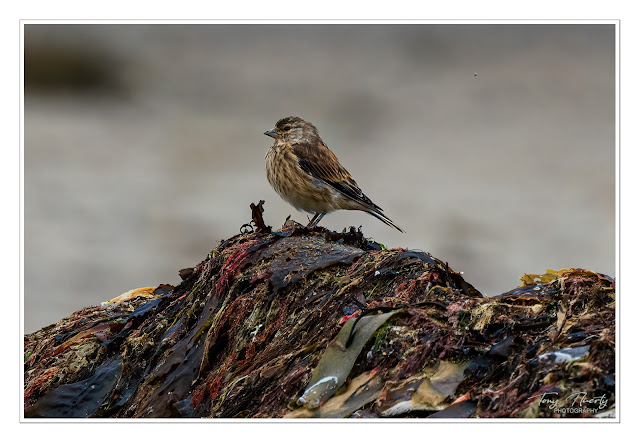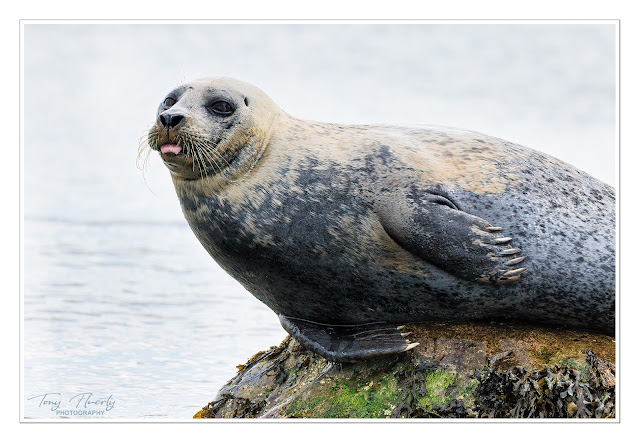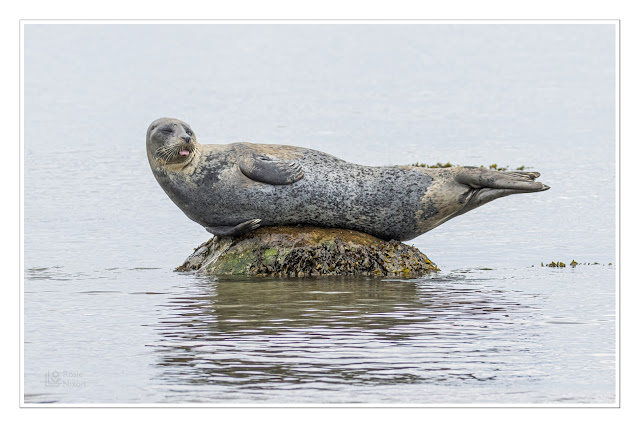Autumn Bird Photography at Shelling Hill Beach
We were in no hurry, the sun had risen an hour earlier, but we made our leisurely way south down the A1, across the border and into County Louth.
We had decided that we would spend a relaxing day simply exploring Templeton beach and enjoy some autumn bird photography on the Cooley Peninsula with the main purpose of our visit, to hopefully photograph wheaters.
Not having visited the area before we wanted to take our time exploring, after all you only get to enjoy an area for the first time, once.
Autumn Bird Photography at Shelling Hill Beach
As it turned out this would also be our first trip to Shelling Hill beach.
Our original plan was to start our adventure at Templeton Beach, but we arrived at Shelling Hill beach instead, so how did we end up there? Let me explain...
Mad Google Woman
Although Rosemary had entered Templeton beach as our destination into the google maps app. mad google woman thought she had a better idea and guided us to Shelling Hill Beach south of Templeton beach instead.
Mad google woman caused us a lot of frustration along the way as she sent us up, down and around countless wee twisty roads no more than a car width wide, until we finally saw a turn off with a sign saying beach …
We followed the sign and we arrived at a beach, but another sign in the carpark read Shelling Hill Beach which left Rosemary a little perplexed.
But I didn’t care at this point …we were finally at the coast and we both forgave her.
As it turned out, if mad google woman hadn't deliberately deceived us, our day would not have been anywhere near as exciting as it turned out.
What we learnt later, talking to the locals , was that if you ever need to use google maps to get directions to Templeton beach, you have to make sure, you type the following into the search “Templeton Beach carpark”.
Who would know that by not adding “carpark” you will be directed to a different beach.
After all how important can one word be?
However happenstance is often a wonderful thing and we were able to park right beside the beach and we knew Templeton beach wasn’t too far away.
We had no expectations about how the day would go or what we would discover, but we got our first shot of adrenalin as soon as we arrived at the car park .
Pulling into the carpark, Rosie noticed a kestrel hovering above us.
Although we tried our hardest, we were unable to bail out of the car and get our cameras in action fast enough before it disappeared over the hill out of sight.
We got close, soo close, but no cigar.
This wasn't exactly the relaxed start to the day that we had in mind lol.
So grabbing the opportunity to expand on our original plan, we set out to explore Shelling Hill beach. The idea was to return to the car park for lunch, then move on to Templeton for the evening.
The 2nd bird we spotted for the day was a lifer for us, a rock pipit, feeding among the smaller rocks and pebbles
A lifer is a term used among birders for a bird you had never seen in the flesh before.
 |
| Not the greatest photo of a rock pipit, but being our first it gets a place in our Lightroom catalogue |
The Manic Marauders
We continued down the beach, with a in coming tide.
Making our way among the rocks and keeping just above the ever changing tidal line we stumbled upon a group of 5 Dunlins (our second lifer's for the day).
They were frenzy feeding around the rocks and small pools, following the rising tide up the beach.
The rocks of various sizes were treacherous to navigate, covered in slimy seaweed, making them beyond slippery. In fact they were down right bone breakingly dangerous.
So Rosemary elected to stay in the safety zone while I was sent in to try to keep up with the manic Dunlins among the rocks.
The Dunlins effortlessly and speedily traversed the rocks and terrorised the small pools like little manic marauders, picking off the abundant insects attached to the seaweed. I stumbled after them doing my best to keep up without breaking my camera or myself.
However I was rewarded for my bravery or maybe stupidity by getting few shots I was very pleased with.
Twenty minutes of trying to keep up with this little troop of manic marauders was enough for me, I was covered in slime and out of breathe so I left them to their food hunt and we headed back up the beach for some lunch.
On the way back we met our third lifer for the day, a Linnet hunting for insects in the clumps of seaweed washed up on the beach in the last big tide.
 |
| This Linnet seemed to be surveying his kingdom from up top of his seaweed throne. |
 |
| Rosemary enjoying her lunch time on a clean sandy spot right beside the carpark, well away from the "insect infested walls” of seaweed further down the beach |
The Seal Saga
While enjoying my coffee and sammies movement out in the surf caught my eye, it was a harbour seal.
Now for most of our Kiwi readers, a seal is nothing to get excited about as most New Zealand fur seals will happily tolerate close contact with humans. This is not the case in the UK unless the seals are pupping. They are protected by law from interference with hefty fines during that time.
Up until this day we had only seen seals beyond the surf at a distance playing hide and seek with us.
To our amazement the seal hauled itself out of the water onto a boulder well within photographic distance. So lunch was abandoned and we cautiously made our way within camera range and made the most of it.
 |
| This does not look comfy to me but then I am not a harbour seal |
The tide was still coming in and it would not be long before the seal would have to surrender his or her resting place to the sea, Happy with our shots we headed back up the beach and continued our lunch.
I was keeping an eye on the seal and I sensed an opportunity to photograph a seal in the water much closer than any of the others I had photographed to this date.
 |
| It was clear that the seal could not hang on for much longer before the sea reclaimed its dominance. |
Time and tide wait for no man
Once again the drama repeated itself and the seal had to abandon the chosen rock and once again I could not believe our luck when the seal swam straight for us this.
I was stuck sitting on the sand and could not move backwards and was stuck with a head shot.
 |
| He hauled out on the rock closer to us and stuck his or her tongue out at us. This time it was too close for even the 100-500 and the 1.4 converter. |
 |
| Rosie had remained on her feet and got back far enough to get the whole beast in the viewfinder. |
Rosie had remained on her feet and got back far enough up the beach to get the whole beast in the viewfinder.
All this carry-on got the attention of some beach walkers who came over to investigate.
The Gift
Some people say I have a gift, a gift I have honed and refined over the years.
That gift is the ability to approach and simply talk to total strangers in order to gain much needed local information without offending them.
These walkers were long time locals and had never seen a Harbour seal so close to humans on this beach in all the time they have lived there. We felt very blessed.
Their thoughts were that perhaps it was sick and needed rest, something that was soon put to the test in the worst way.
We kept a respectable distance while I asked questions about the birdlife and was told that there would be heaps of birds out on Cooley point when the tide was going out towards evening.
This proved to be correct.
Meantime the seal made one more attempt to find peace right on the edge of the sand.
 |
| Mr or mrs seal hauled out on the edge of the sand on a clump of seaweed. |
The seal must have felt more exposed this close to the beach and was much more vigilant in keeping an eye out for danger.
It wasn't long before the seal got very anxious and I got this last shot just before I understood the reason for the anxious behavior.
A large dog came racing across the sand straight at the seal and the seal moved remarkably fast for a large beast and into the water. There was nothing in the way he moved that indicated any sickness or a physical problem and we never saw him again.
The owners of the dog thought it was funny, to them it was sport for their doggie.
What could I do? These people were most likely locals and I was but a visitor to their part of the world.
Domestic dogs are a serious threat to all wildlife that lives within the tidal zone, both here in Ireland and back home in New Zealand.
Education doesn't work with these people as exercise for their dogs top any rights the wildlife should enjoy.
We returned to finish our lunch.
We noticed that the tide had spewed up fresh mats of wet, sticky, seaweed back down the beach which no doubt would attract the flies. We also hoped the flies would in turn attract the wheatears and so this proved to be case.
But that will be in next blog.
We just want to say to all you people who took the time to read this blog post THANK YOU.
In the age of the youtube vlogger it is no small ask to expect someone to take their time and effort to read a blog post.



Comments
Post a Comment